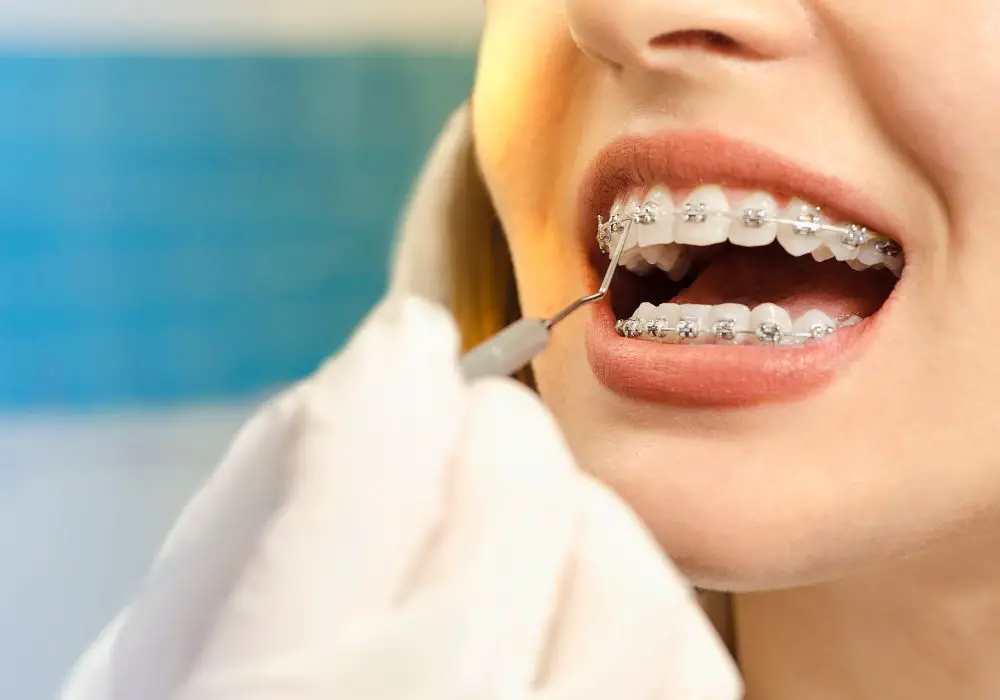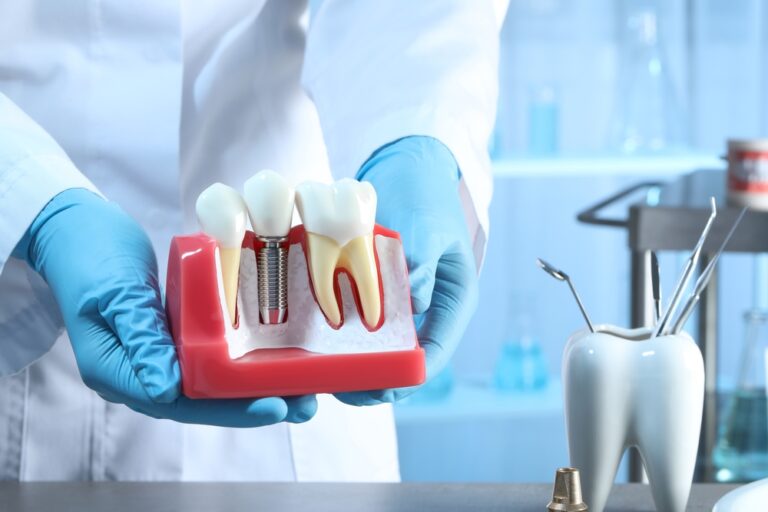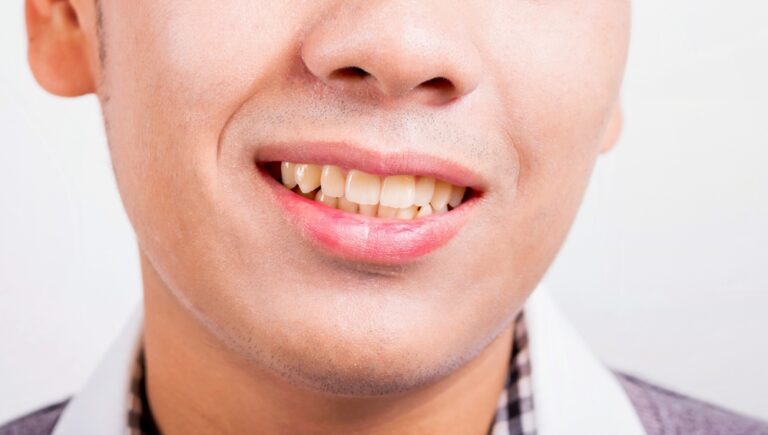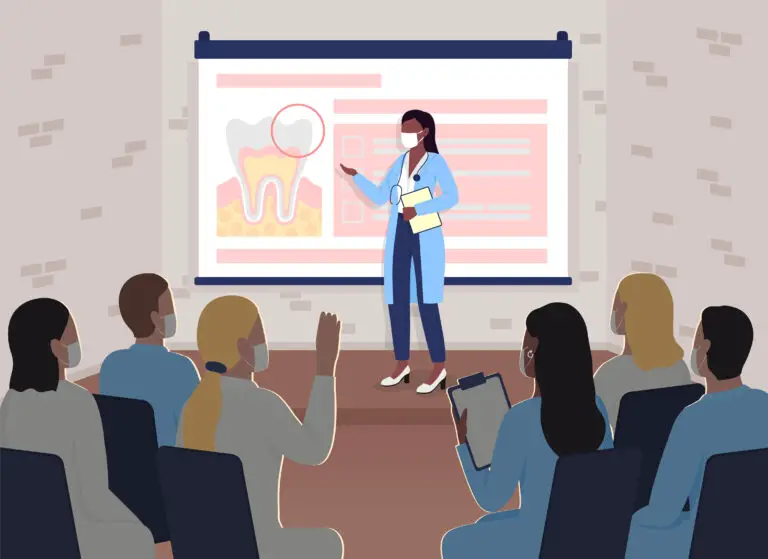Having braces makes it more difficult to keep teeth clean. Brackets, wires, elastics, and other appliance components provide places for plaque to accumulate. This plaque causes cavities, gum disease, staining, and bad breath. Understanding how braces promote plaque buildup and using proper hygiene techniques can help minimize problems.
How braces lead to increased plaque

Orthodontic hardware makes controlling plaque more challenging:
Physical interference with brushing and flossing
- Brackets and wires block access to tooth surfaces for cleaning. A toothbrush or floss simply can’t reach as easily with brackets in the way.
- Tight contacts between teeth with braces further limit access between teeth for cleaning.
- Getting brush bristles and floss into the spaces around brackets takes extra time and dexterity.
Additional surfaces for plaque adhesion
- Brackets provide a platform for plaque to stick to on each tooth.
- The cement underneath each bracket also attracts plaque.
- Archwires and other appliances give even more area for plaque to accumulate.
Altered tooth morphology
- Brackets bonded to teeth create tiny ledges, crevices, and corners where plaque can gather.
- Teeth move during orthodontic treatment, changing their positioning and contact points. These shifts affect areas prone to plaque buildup.
- Some braces appliances like bands can create tooth irregularities and defects where plaque easily collects.
Interference with natural self-cleaning mechanisms
- Saliva helps rinse away food debris and buffer acid. But brackets and wires make it harder for saliva to naturally cleanse all tooth surfaces.
- The tongue also helps keep teeth clean but has impaired access to tooth surfaces with braces.
- Orthodontic hardware traps more food against teeth rather than letting it get washed away. This gives bacteria more nutrients.
Problems using proper brushing and flossing methods
- Mastering the modified brushing and flossing techniques for braces takes patience and practice. Achieving good plaque removal around all orthodontic features is challenging.
- It’s easy to get frustrated and skip areas, resulting in plaque buildup in spots you can’t easily reach.
- Insufficient brushing time is common with braces. Most people brush less than 2 minutes total each day rather than spending the extra time needed to clean adequately around braces.
Harmful effects of plaque accumulation during orthodontic treatment

When plaque persists on teeth and appliances, many problems can occur:
- White spot lesions – Demineralized areas appear as white spots around brackets where acids have dissolved enamel.
- Tooth decay – Plaque acids eat away at tooth structure, leading to cavities. Decay occurs frequently between teeth and under bands.
- Gum disease – Gingivitis and periodontitis caused by plaque bacteria is exacerbated by braces. Mobile teeth, gum recession, and bone loss can result.
- Irritation and inflammation – Plaque bacteria inflame gums around brackets. Tissues become red, sore, and prone to bleeding.
- Halitosis – Volatile sulfur compounds produced by plaque bacteria cause bad breath.
- Discolored teeth – Plaque can calcify into tartar that traps stains. Teeth appear yellow even after brace removal.
- Extended treatment time – Excess plaque prolongs orthodontic treatment. Damaged appliances may need replacement. Goals take longer to accomplish if plaque isn’t well controlled.
Preventing plaque buildup during orthodontic treatment

Plaque control is critical for healthy teeth and gums with braces. Useful techniques include:
Careful brushing
- Brush gently after each meal for at least 2 minutes using a soft-bristled toothbrush.
- Use specialized orthodontic brushes if needed to better access areas around appliances.
- Pay attention to brushing where brackets attach to thoroughly remove plaque.
- Take extra time brushing the gumline and areas between teeth where plaque likes to collect.
- Use fluoride toothpaste to strengthen enamel.
Daily flossing
- Gently floss between contacts, taking care not to tear wires or brackets. Use floss threaders if needed.
- Floss each tooth, not just problem spots, to clear plaque from along the gumline.
Antibacterial rinses
- Rinse daily with an antibacterial mouthwash to kill plaque bacteria. Avoid alcohol-containing varieties that dry the tissues.
Dietary modifications
- Reduce snacking frequency to limit acid attacks on enamel.
- Avoid sugary and starchy foods that feed plaque bacteria.
Professional cleanings
- Get thorough cleanings at the dentist every 3 to 6 months to supplement home plaque removal.
- Polishing appointments may help remove stains and calcified plaque.
Fluoride applications
- In-office fluoride varnish provides an extra layer of protection and strengthens enamel.
- High concentration prescription toothpaste or gel used at home helps remineralize early lesions.
With diligence and using all available cleaning methods, it’s possible to control plaque buildup and prevent damage during orthodontic treatment. Set up a routine and take time to clean thoroughly around braces each day. See your dentist regularly to help keep your teeth and gums healthy while wearing braces.
Frequently Asked Questions
Here are answers to common questions about managing plaque with braces:
1. Why is plaque a bigger issue with braces?
Braces make it harder to clean teeth optimally. The brackets and wires leave less tooth surface accessible to your brush and floss. Plaque bacteria take advantage of these protected areas.
2. How can I brush effectively with braces?
Use a soft manual or electric toothbrush with orthodontic head. Brush carefully at a 45 degree angle away from the gums. Take extra time, at least 2 minutes, to gently clean each surface around braces. Pay special attention to areas near brackets.
3. Should I use a special toothbrush with braces?
Orthodontic toothbrushes feature smaller heads, softer bristles, and angled handles to improve access to teeth with braces. Interdental brushes also help clean under wires. Select a brush that lets you comfortably reach all areas.
4. How often should I floss with braces?
Floss carefully between teeth once per day. Use floss threaders if necessary to get the floss beneath wires. Take care not to snap wires or dislodge cement when flossing.
5. What foods should I avoid to minimize plaque with braces?
Avoid sticky, crunchy, hard, chewy, and sugary foods. These items get trapped around braces and increase plaque. Focus on eating plenty of fruits, vegetables, lean proteins, whole grains and dairy.







